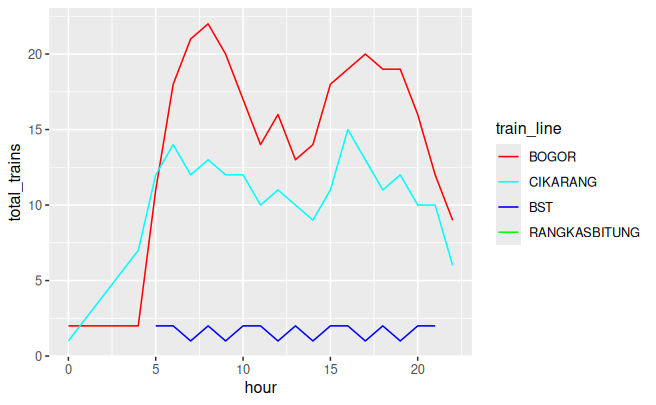Analyzing Indonesia’s Busiest Train Station: Manggarai
Project
Python
R
Finding the most optimal time for passengers to commute
Executive Summary
Background and Objective
Manggarai is the largest train station in Indonesia, a hub for trains from all routes to transit in. This project aims to find the most optimal time for train passengers to go to the station.
Methodology
Data Collection
The data was collected by querying the API behind the train company official website, KAI Commuter, using Python.
Data Processing
The data was transformed into a rectangular format and saved as a CSV file using R.. The column names are translated into English for accessibility and further renamed for clarity.
Data Analysis
The analysis was conducted using R to perform statistical calculations and create visualizations.
Key Insights
Rush hours
There are significantly more trains at around 06:00 - 08:00 in the morning and 16:00-17:00 in the afternoon, than in other times, indicating rush hours

Recommended Actions for Passengers
- If you prefer convenience and want to avoid rush hours, it’s best to avoid the station between 06:00 - 08:00 in the morning and 16:00 - 17:00 in the afternoon.
- Conversely, if you don’t mind the crowd and don’t want to wait long for a train to arrive, it’s best to come these rush hours.
Caveats and Limitations
- The rush hours are inferred from the amount of trains that arrive, which may not accurately represent the situation. However, the reasoning is solid because the increased number of trains likely corresponds to higher passenger volumes.
- The recommended actions assume that people go to Manggarai station directly. However, most people come to Manggarai through other train stations, which mean they have less control over their arrival time. Fortunately, due to the generally consistent train speeds, people can predict their arrival time at Manggarai based on the departure time from their nearest stations.